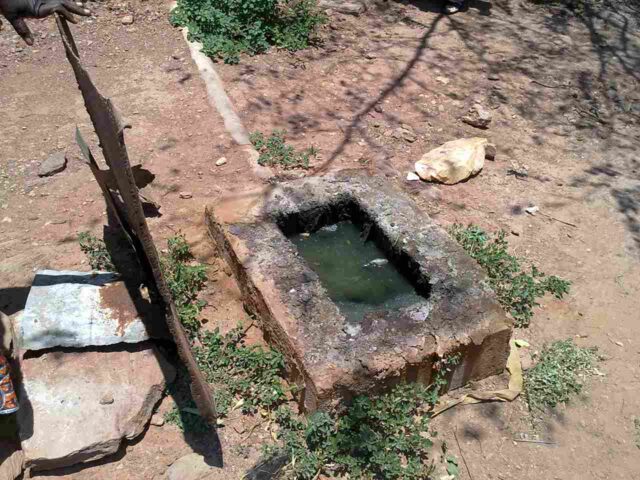Last Updated on March 12, 2023 by
Owning a home with a septic tank comes with its issues. It’s more significant than forgetting to empty the bins if you neglect to clean your septic tank. If you’ve had a septic system for just a long time, you’ve probably seen that there are specific telltale signals that it needs to be emptied. If you’re fresh to possessing a septic tank, the indications listed below are the most important things to be aware of.
Septic tank
Septic tanks are a necessity for every house. Drain pipes pump wastewater into the septic tank after you flush the toilet or fill the sump pit. For optimal performance, the septic tank must be properly maintained and serviced. Septic tanks that are complete, harmful, or clogged exhibit different symptoms. These can identify signs of a full septic tank.
What does it mean to have a “Full” Septic Tank?
Before we go into the seven warning flags to look for, it’s essential to understand what a “full” tank means. There are three different ways to define it completely.
1. Average Level
This signifies that the capacity of your septic tank has been reached. This means that waste & wastewater can flow freely into or out of the septic system thanks to the inlet and outtake valves. When a tank is pumped, it gets emptied, but it returns to its typical “full” state as it is used.
2. Sludge Accumulation
This is a typical issue that septic tank owners encounter. Sludge can accumulate over time and then become buried. This muck will not go away by itself and must be removed. The flow of wastewater will proceed to the drainage basin.
3. Overfilled Tank
The drainage field will reach a point where it will no longer receive water. Water will back it up into the overflowing tank if this happens. Water levels will reach their maximum capacity. Now that we’ve learned how a septic tank can become overflowing.
Seven warning signals
1. Water in pool
Pools of water accumulating around your septic tank’s drain field are the first item to look for. This is a telltale sign of a septic tank that has overflowed. If it hasn’t stormed in a while and you’re have seen a lot more water, it’s almost certainly your septic tank. This is most likely to happen whenever your tank is complete and solid water clogs the system. This will force fluids to rise to the surface of the ground.
2. Drains that are slow
Take note if you notice your sink, bathtub, or toilet emptying slowly around your home. This could indicate a block in your septic tank or that your network is complete and must be opened. Slow drainage is a warning you might not want to overlook in any case. The first line of defense may be to use a septic-friendly drain cleaner; however, if the problem persists, it’s preferable to get it emptied. Furthermore, if you see any one of the danger signals, make an appointment to have it cleared as soon as possible.
3. Smells
You should expect a foul odor because all of your home’s wastewater will be directed to your septic system. It will also have a distinct smell that you will notice. If you notice odors near your septic tank, that’s another clue that it’s either complete or close to being full. It’s also possible that you have a leakage, so have a quick look. The flip side of scents is that you will be able to detect them. Your neighbors may also be eager to complain. That being stated, it’s preferable to discover a solution as soon as possible.
Read More: How To Clean Paint Brushes Acrylic? What Is The Best Way To Clean Them
4. An extremely healthy yard
A septic tank that is overflowing has a relatively favorable side effect. The grass over your sewage tank may be the healthiest grass you’ve seen before. It will outshine other items in your garden, allowing you to notice it. If you observe this, it’s another red flag to be aware of. If it’s near your septic tank, water may be pouring out of your tank, indicating that it’s either leaky or full. In any case, it’s essential to get it checked out.
5. Backup sewer
This is one user won’t be able to prevent, and it’s one you don’t want to occur. It is the most evident, as well as the most harmful. Keep a watch on your house’s lowest drains; if they show indications of backing up, you should get your tank drained as soon as possible.
6. Gurgling Water
If you hear gurgling sounds from your pipes, don’t ignore them, especially if they’re reliable. It’s yet another indication that your septic tank is full and requires to be drained.
7. Flushing Issues
If you notice that all of your toilets are having trouble flushing or have a poor flush, your septic tank may be full. If this symptom appears on all toilets within your home, there’s likely more to the problem than a local blockage.
The importance of septic tank maintenance and emptying
Keeping a routine is the easiest way to figure out when your tank wants to be emptied. It’s a straightforward yet effective solution. If you can establish adequate emptying intervals, you may not notice any with the above warning indications. The volume of the septic tank and the number of individuals who use it will determine how often you need to empty it. According to the Environmental Protection Agency, septic tanks should be cleaned every 3-5 years. Several factors will determine the precise timing.
- Size of the Family
- Size of Septic Tank
- Quantity of Wastewater Produced
- The amount of solid waste produced
If you’ve recently purchased the home with the septic tank, inquire about the preceding owners’ routine. Or, at the very least, ask when the tank was last emptied so you can get a ballpark estimate. If you don’t have access to the records, it’s better to be prepared and get it cleaned right soon. This will leave you in a pristine state and give you a fresh start on your plan.
How often should a septic tank be pumped?
Septic tanks are essential for homes and businesses not connected to a main sewer line. They help to process and treat wastewater, but over time they can become full and require pumping to maintain their efficiency. The frequency of pumping a septic tank depends on several factors such as the size of the tank, the number of people using it, and the amount of wastewater generated.
Generally, septic tanks should be pumped every 3-5 years. However, if you have a larger tank and a smaller household, you may be able to go longer without pumping. On the other hand, if you have a smaller tank and a larger household, you may need to pump it more often, such as every 2-3 years. It is also important to note that heavy water usage, such as excessive showers, laundry, and dishwashing, can also increase pumping frequency.







